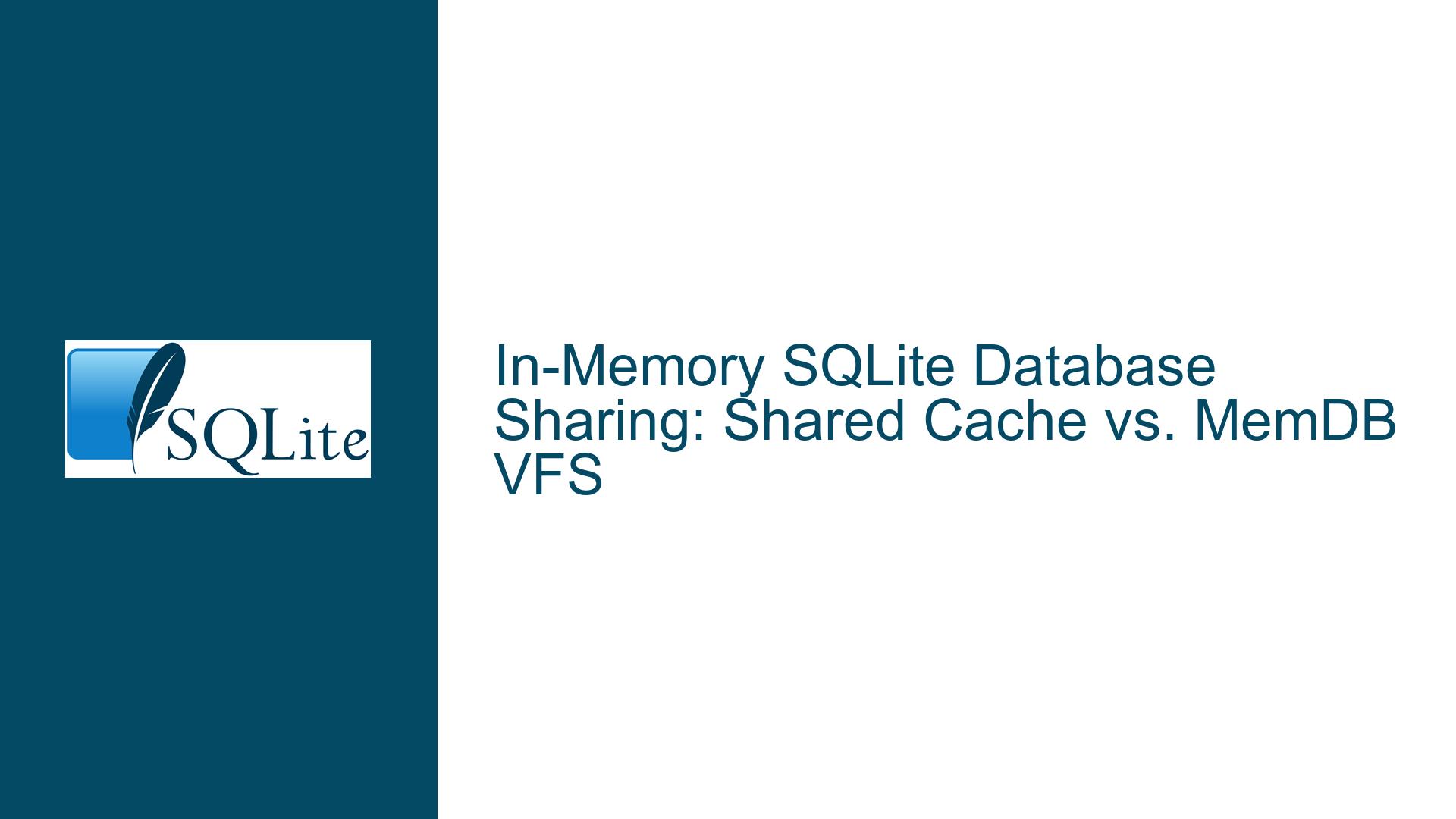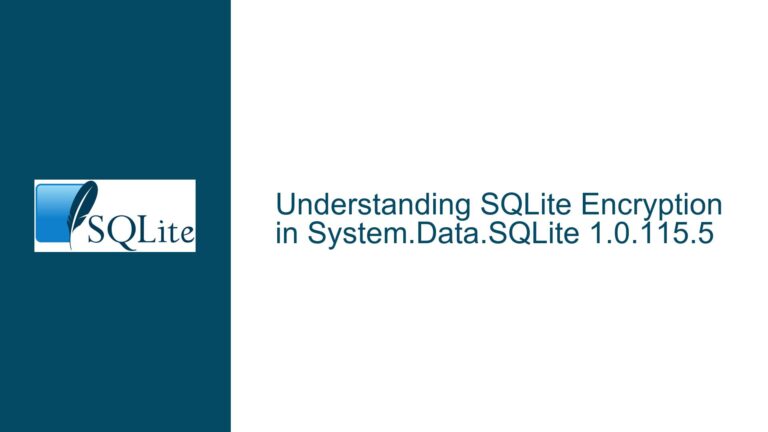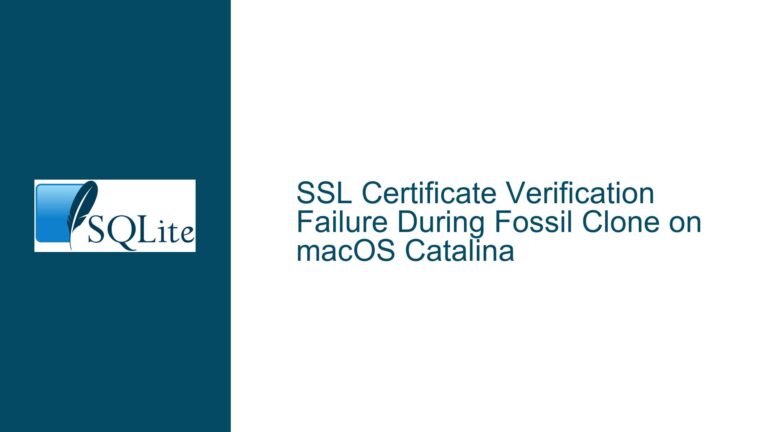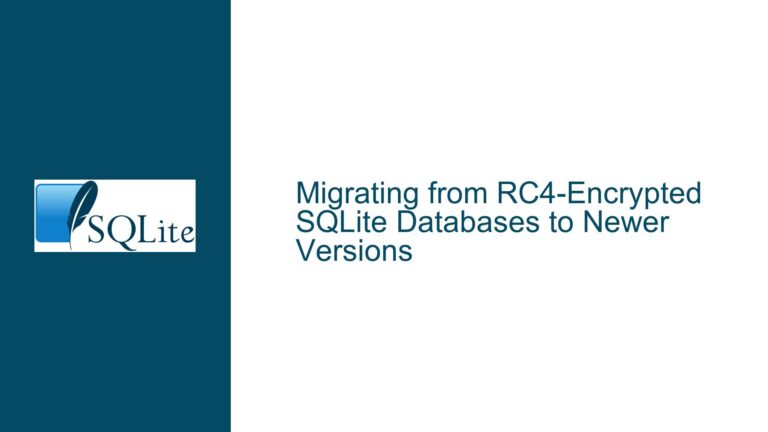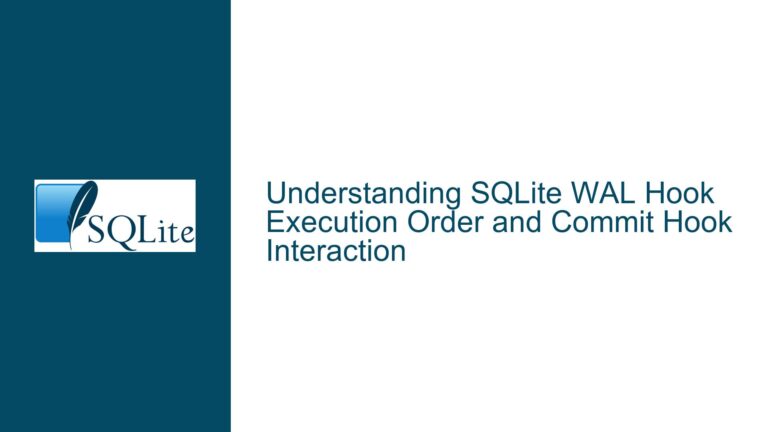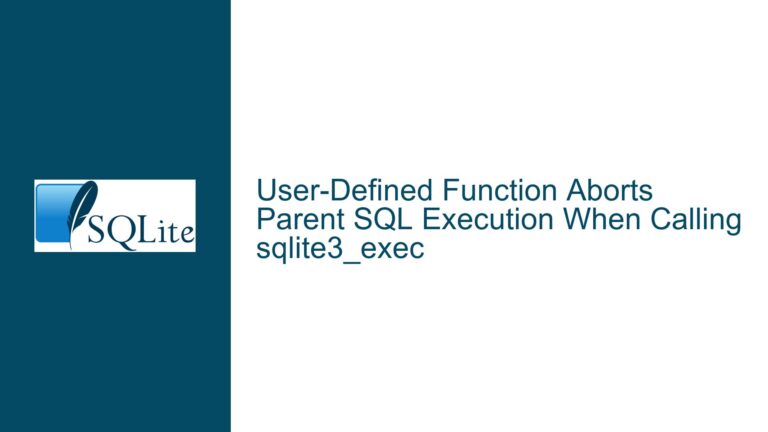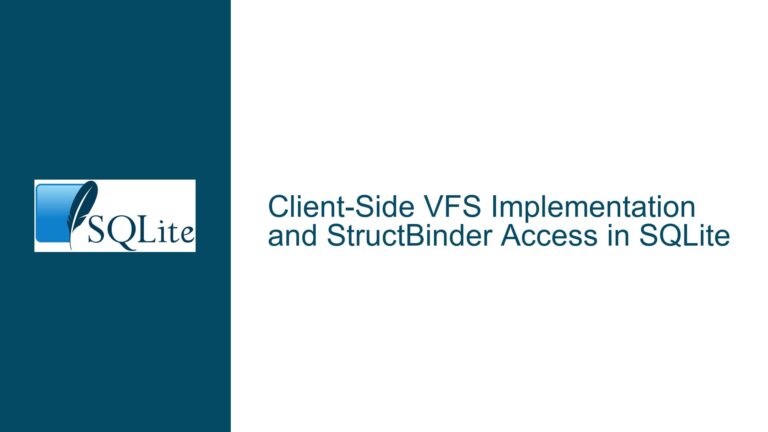In-Memory SQLite Database Sharing: Shared Cache vs. MemDB VFS
Understanding the Core Issue: Shared In-Memory Database Access in SQLite
The core issue revolves around the need to share an in-memory SQLite database between multiple database connections within the same process. This is a common requirement in scenarios where multiple threads or components within an application need concurrent access to the same dataset without the overhead of disk I/O. Historically, SQLite has provided two primary mechanisms for achieving this: the shared cache mode and the memdb VFS (Virtual File System). However, the introduction of the memdb VFS in SQLite 3.36.0 has introduced some confusion regarding which method to use, their respective advantages and disadvantages, and whether they support advanced features like Write-Ahead Logging (WAL) mode for Multi-Version Concurrency Control (MVCC).
The shared cache mode, enabled via the URI parameter cache=shared, has been the traditional approach for sharing an in-memory database. It allows multiple connections to share the same cache, reducing memory usage and enabling concurrent access. However, shared cache mode has limitations, particularly around locking and concurrency, which can lead to performance bottlenecks in high-concurrency scenarios. Additionally, shared cache mode does not support WAL mode, which is a significant drawback for applications requiring high levels of concurrency and MVCC.
The memdb VFS, introduced in SQLite 3.36.0, provides an alternative mechanism for sharing in-memory databases. By specifying vfs=memdb in the database URI, multiple connections can access the same in-memory database without requiring shared cache mode. This approach promises better concurrency and potentially supports WAL mode, making it an attractive option for modern applications. However, the lack of comprehensive documentation and clarity around its implementation has led to confusion and uncertainty among developers.
Exploring the Root Causes: Why the Confusion Exists
The confusion surrounding the use of shared cache mode versus memdb VFS stems from several factors. First, the documentation for the memdb VFS is currently incomplete or difficult to find, leaving developers to rely on forum discussions and source code analysis to understand its behavior. This lack of official guidance has led to conflicting interpretations and assumptions about how the memdb VFS works and whether it supports advanced features like WAL mode.
Second, the shared cache mode and memdb VFS appear to overlap in functionality, leading to questions about whether they are redundant or serve distinct purposes. While both mechanisms enable sharing of in-memory databases, they differ in their underlying implementation and concurrency models. Shared cache mode relies on a single global cache shared among connections, which can lead to contention and locking issues. In contrast, the memdb VFS allows each connection to maintain its own private cache, potentially improving concurrency and reducing contention.
Third, the introduction of the memdb VFS has raised questions about its compatibility with WAL mode. WAL mode is a critical feature for applications requiring high concurrency and MVCC, as it allows readers and writers to operate concurrently without blocking each other. However, WAL mode requires support for shared memory (SHM) operations, which are not currently implemented in the memdb VFS. This limitation has led to uncertainty about whether the memdb VFS can fully replace shared cache mode in scenarios where WAL mode is required.
Finally, the evolution of SQLite’s in-memory database sharing mechanisms has created a fragmented landscape. Developers must navigate between older, well-documented approaches like shared cache mode and newer, less-documented alternatives like the memdb VFS. This fragmentation has made it challenging to determine the best approach for a given use case, particularly when performance, concurrency, and compatibility with advanced features are critical considerations.
Resolving the Issue: A Comprehensive Guide to Troubleshooting and Solutions
To address the challenges and confusion surrounding shared in-memory database access in SQLite, developers must carefully evaluate their requirements and understand the trade-offs between shared cache mode and the memdb VFS. The following steps provide a structured approach to troubleshooting and resolving issues related to in-memory database sharing:
Step 1: Assess Your Concurrency Requirements
The first step in resolving the issue is to assess your application’s concurrency requirements. If your application requires high levels of concurrency and MVCC, WAL mode is essential. However, as of the current implementation, neither shared cache mode nor the memdb VFS fully supports WAL mode for in-memory databases. This limitation may require you to reconsider your approach or explore alternative solutions, such as using a disk-based database with WAL mode enabled.
If your application can tolerate the limitations of shared cache mode, such as readers blocking writers and vice versa, then shared cache mode may be a viable option. However, if you require better concurrency and reduced contention, the memdb VFS is likely the better choice, despite its current lack of WAL mode support.
Step 2: Evaluate the Performance Implications
The next step is to evaluate the performance implications of each approach. Shared cache mode can lead to contention and locking issues, particularly in high-concurrency scenarios. This can result in performance bottlenecks and reduced scalability. In contrast, the memdb VFS allows each connection to maintain its own private cache, potentially improving concurrency and reducing contention. However, the lack of WAL mode support in the memdb VFS may offset these benefits, particularly for applications requiring high levels of concurrency.
To evaluate the performance implications, consider conducting benchmarks and stress tests using both shared cache mode and the memdb VFS. Measure key performance metrics, such as transaction throughput, latency, and resource utilization, under different concurrency levels. This will help you determine which approach best meets your performance requirements.
Step 3: Review the Documentation and Source Code
Given the current lack of comprehensive documentation for the memdb VFS, it is essential to review the SQLite source code and any available forum discussions to gain a deeper understanding of its behavior. Pay particular attention to the implementation of the memdb_io_methods structure, which defines the I/O operations supported by the memdb VFS. This will help you understand the limitations and potential workarounds for enabling WAL mode in the memdb VFS.
Additionally, monitor the SQLite documentation and forum for updates and clarifications regarding the memdb VFS. The SQLite development team has acknowledged the need for improved documentation, and future updates may provide the clarity and guidance needed to make informed decisions.
Step 4: Consider Alternative Solutions
If neither shared cache mode nor the memdb VFS meets your requirements, consider exploring alternative solutions. One option is to use a disk-based database with WAL mode enabled, which provides the concurrency and MVCC features needed for high-performance applications. While this approach introduces the overhead of disk I/O, modern storage systems and caching mechanisms can mitigate this impact.
Another option is to implement a custom VFS that supports the required features, such as WAL mode and shared memory operations. This approach requires a deep understanding of SQLite’s internals and may involve significant development effort. However, it provides the flexibility to tailor the database implementation to your specific requirements.
Step 5: Implement and Test Your Solution
Once you have evaluated your options and selected the most suitable approach, implement and test your solution in a controlled environment. Start by configuring your database connections to use either shared cache mode or the memdb VFS, depending on your requirements. Monitor the behavior of your application under different workloads and concurrency levels to ensure that it meets your performance and scalability goals.
If you encounter issues or limitations, revisit your assessment and consider alternative solutions. Iterate on your implementation until you achieve the desired balance of performance, concurrency, and compatibility with advanced features like WAL mode.
Step 6: Stay Informed and Adapt to Future Updates
Finally, stay informed about future updates and developments in SQLite. The SQLite development team is actively working on improving the documentation and addressing the limitations of the memdb VFS. As new features and enhancements are introduced, revisit your implementation and adapt it to take advantage of these improvements.
By following these steps, you can effectively troubleshoot and resolve issues related to shared in-memory database access in SQLite. Whether you choose shared cache mode, the memdb VFS, or an alternative solution, a thorough understanding of your requirements and the trade-offs involved will enable you to make informed decisions and achieve optimal performance and scalability for your application.
